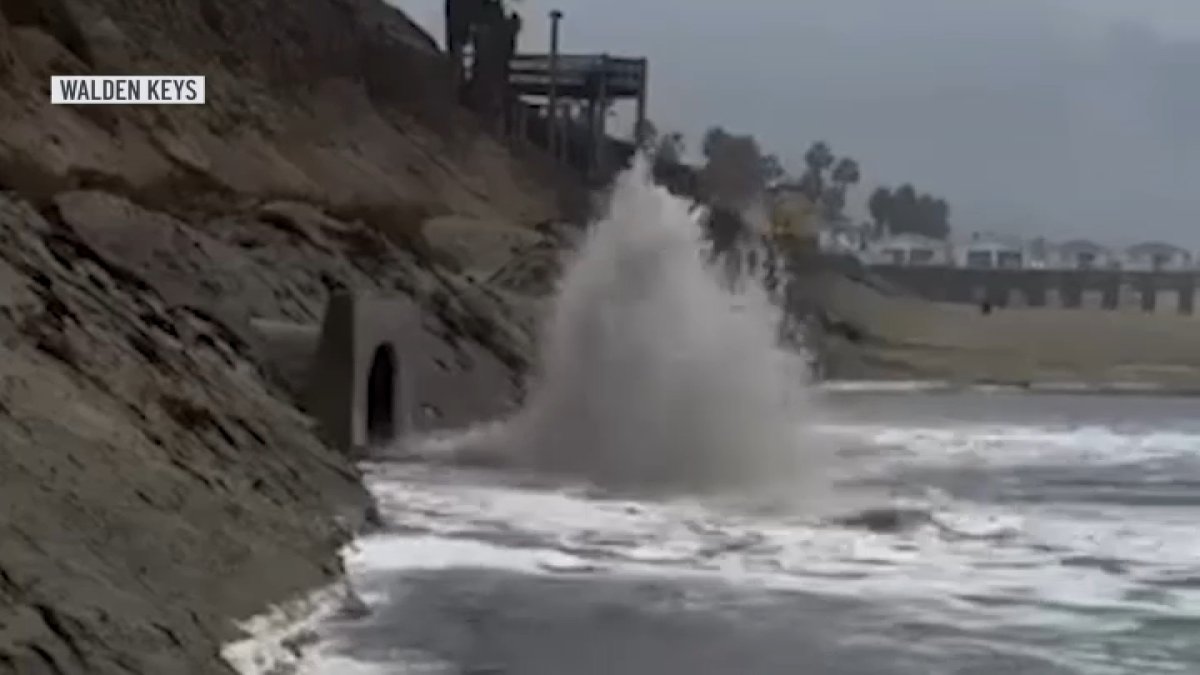Any rain is welcome across San Diego this time of year, but with the rain come issues along our coastline and in our rivers. The impact from a storm isn’t just about the rainfall accumulation, it’s also about the runoff that trickles or even rushes through local waterways and into the ocean, which can pose a health risk for San Diegans.
You might’ve seen a video circulating on social media of stormwater runoff rushing out of a drain just north of Crystal Pier in Pacific Beach on Tuesday. As Phillip Musegaas, the executive director for San Diego Coastkeeper, said, this isn’t pure rainwater: ”Anything that we think of that is out on the street, that’s going to get carried into the storm drains and out into our beaches and ocean from the runoff.”
Musegaas said paved and impermeable surfaces accelerate stormwater runoff.
”Anything that can carry that debris or those chemicals, or oil or bacteria, dog poop, you name it,” Musegaas said.
San Diego County has a standing General Rain Advisory for all coastal waters. The advisory goes into effect 72 hours after a rain event ends. The advisory is issued when a significant rain event results in 0.20’’ of rain, causing urban runoff to make its way to the ocean and bays. Because of this, contamination can cause bacteria to increase near storm drains, river and lagoon outlets.
”High levels of bacteria in the ocean can pose a public health threat to people who are surfing or swimming, or going out kayaking after a storm,” Musegaas said.
You might not be able to see that pollution, but 16 miles east along the San Diego River in Santee, the contamination is a bit more obvious.
”There’s a lot of litter, we’ve got a cooler, there’s lumber, illegal dumping, carpets, a large shopping cart,” Sarah Hutmacher, COO of the San Diego River Park Foundation, said on Wednesday, pointing out the debris near the river.
Every week, volunteers with the foundation come to Mast Park to pick up trash and debris along the river. On Wednesday, that amount totaled 2,200 pounds, which is a drop in the bucket compared to the 250,000 pounds they collect in a year.
The only difference when collecting after a storm is that Hutmacher says the debris is damp, making it heavier.
”The trash is the most visible part, but there is also a ton of unseen pollution — you know, bacterial pollution, nutrients, chemicals — that get into the river, and those things are really harmful for wildlife, they’re bad for the water quality, they’re bad for plants and animals out here,” Hutmacher said.
Rain or shine, Hutmacher and her team are out along the river, picking up trash and debris that could otherwise inch its way closer to the coast.
”At the end of the day, we have a giant pile of trash that’s gonna be out of here,” Hutmacher said. “The birds are chirping, the sun is shining, like it’s a great way to make a difference and help protect the river from stormwater debris.”

